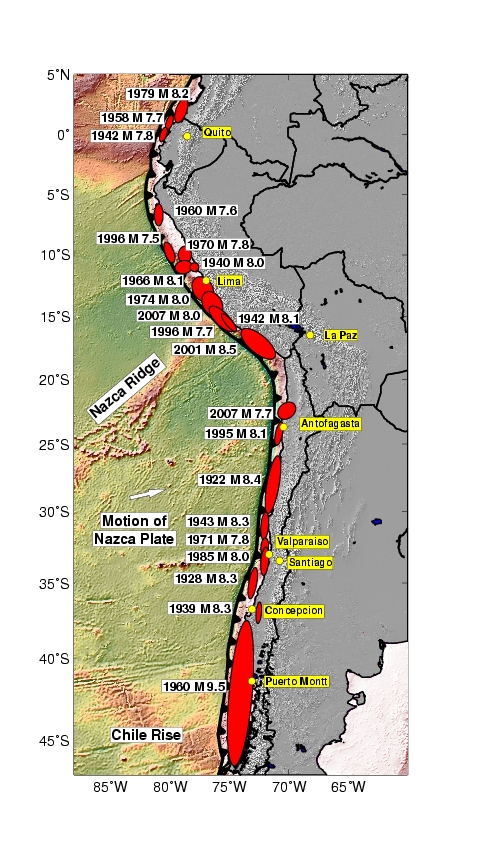Given the paucity of great earthquakes in the region of the recent earthquake swarm along the subduction zone offshore or northern Chile, we are curious to know if there will be a large magnitude earthquake there. The seismologic record of great earthquakes extends back only a century, but there are a few places along the west coast of South America that have not ruptured. Here is an older map by Matt Pritchard (Cornell) that has some historic earthquakes plotted.

If we look at this region of northern Chile, some paleoseismic records exist for this part of the subduction zone. One question remains: does this swarm promote or retard the likelihood of a great earthquake? A great earthquake would probably generate a trans Pacific Tsunami. This figure from Chlieh et al. (2011) shows the slip models (earthquake slip in meters) and earthquake slip regions for pre-seimologic (prior to seismometers) earthquakes in grey. The swarm of earthquakes from this March are in the northern region of the 1877 M 8.8 subduction zone earthquake.
Chlieh et al. (2012) calculated the “slip deficit” (the amount of plate motion imparted upon the fault as strain given a plate convergence rate and some amount of time) a series of earthquakes along the west coast of South America. One of the largest unknowns is the state of stress on the fault prior to any modeling.
Chlieh also calculated the slip deficit following the 1877 M 8.8 great subduction zone earthquake in the region of this earthquake swarm.
Chlieh et al., 2011. Interseismic coupling and seismic potential along the Central Andes subduction zone, Journal of Geophysical Research, v. 116, B12405, 21 p.
6 thoughts on “Interseismic Fault Coupling: the 2014 March Northern Chile Swarm”